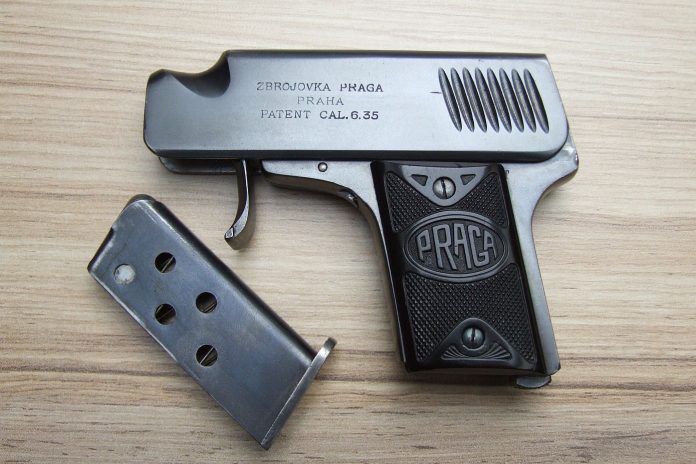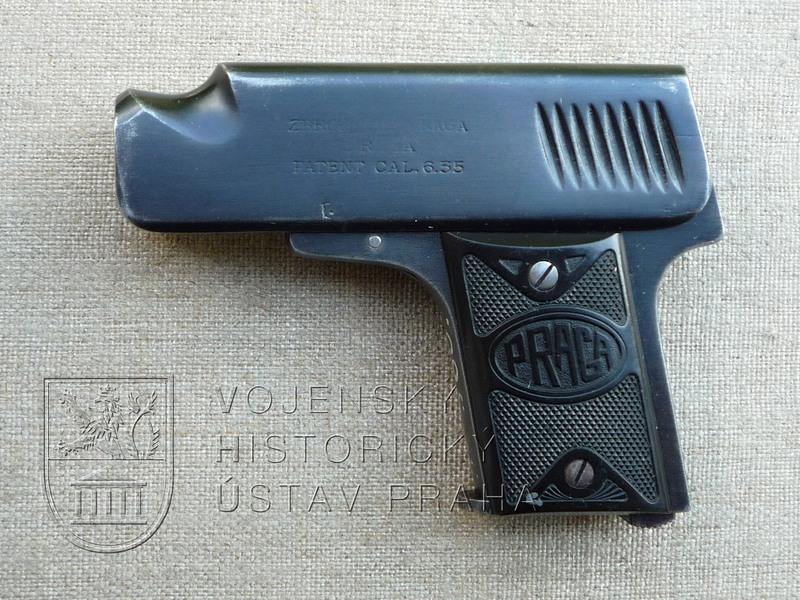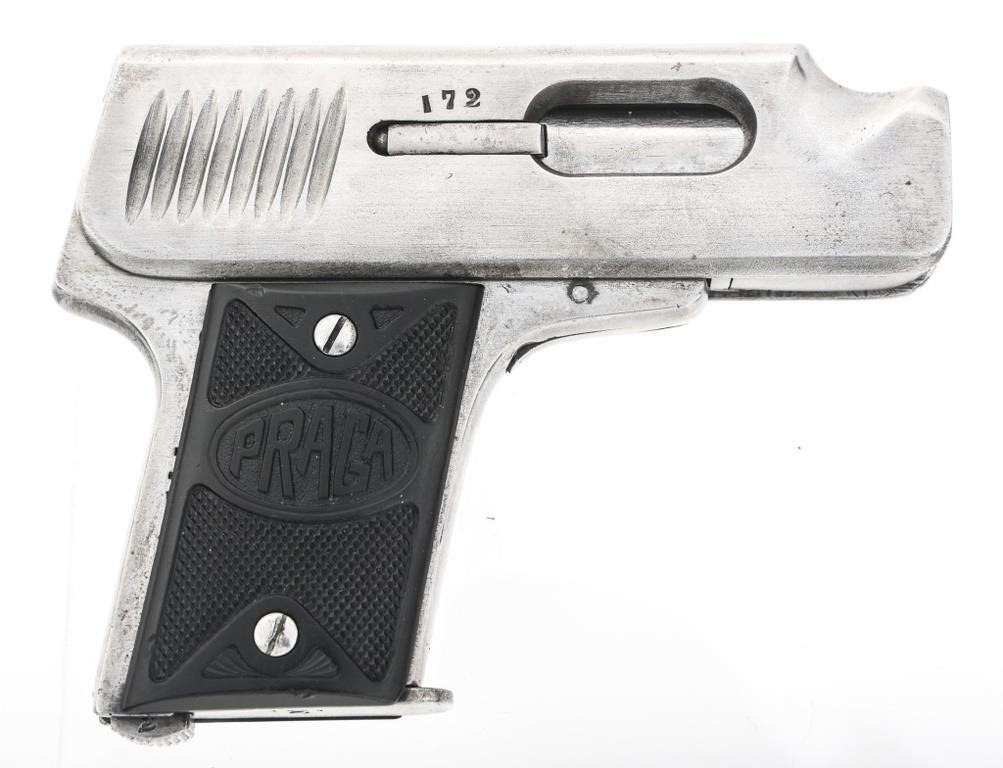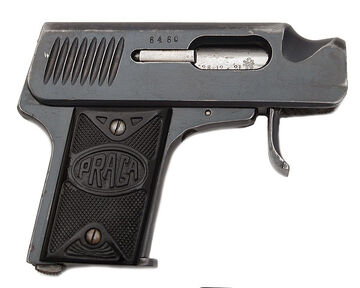
The Czechs and former Czechoslovakians have a rich history of interesting and dynamic arms design. Weapons like the CZ-75, the BREN gun, and many more came from the minds of Czech and Slovak people. Vaclav Holek was a Czechoslovakian arms designer who lived from 1886 to 1954. He and his brother were prolific arms designers with a long history of patents and lots and lots of work in the world of machine guns after World War I. Between machine gun designs, Holek designed two pistols, one for the military and police, known as the Praga Model 1919, and one aimed at the civilian market, called the Praga Model 21.
The Praga Model 21 is an odd-looking little gun, and as a fan of pocket pistols and weird designs, I was drawn to the pistol. Its odd look meant I had to dive deep into the Praga Model 21 and learn the story behind this fairly unique-looking little pocket pistol. It turned out to be fairly interesting, but it wasn’t exactly the most successful pistol of its era.
The Praga Model 21 – One Handed
The entire design of the Praga Model 21 is based on one-handed operation. The notch at the top of the slide is a groove designed to allow the user’s finger to grip and cock the slide. You might notice a distinct lack of a trigger. Well, the trigger uses a folding design, much like the Colt Patternson, and a folding trigger doesn’t need a stinking trigger guard. The trigger would automatically deploy when the slide reciprocated a few millimeters.

In the 1920s, it was a common expectation to carry an automatic pistol with an empty chamber. The design process and idea was that a shooter could grip the gun and operate it entirely with a single hand. If you did want to carry the gun cocked and locked, the trigger could be manually folded upward, but you had to retract the slide slightly to do so and retract the slide slightly again to deploy the trigger.

The pistol had a very flat and near-featureless design. It would fit in a pocket very well. It has the SIG SAS treatment before SIG ever existed. There were no snags present to catch on the draw, and it would slide into a pocket rather easily. The magazine release is at the bottom of the grip in a very European-style design. There are no visible sights, just a trench at the top of the slide.
Inside the Praga Model 21
The gun used a simple blowback design and utilized the .25 ACP. It’s a tiny gun, and the barrel sits super low, giving it a very low bore axis, but that doesn’t matter much with .25 ACP. Since the barrel sits so low the recoil spring sits above the barrel. An interesting design feature is the fact it uses a wooden guide rod. According to a translation from a Czech Museum website, it achieves “elastic and quiet movement of the bolt.”

I’m not quite sure if that works, but I’m guessing a wood guide rod would be pretty cheap. The magazine held six rounds in a super simple single-stack magazine. The weapon featured a magazine safety that was very popular with European pistols in the era. While it’s fairly simple as far as pistols go, it’s certainly unique in its design.
There are somewhere between 7,500 and 8,600 of these handguns produced. I’ve seen both numbers tossed around. The weapon was built for two years but has since faded away. While the gun wasn’t successful, the overall design of the Praga Model 21 is quite interesting. Sadly, interesting doesn’t always mean successful.



